U. has largest acceptance rate gap between men, women in Ivy League
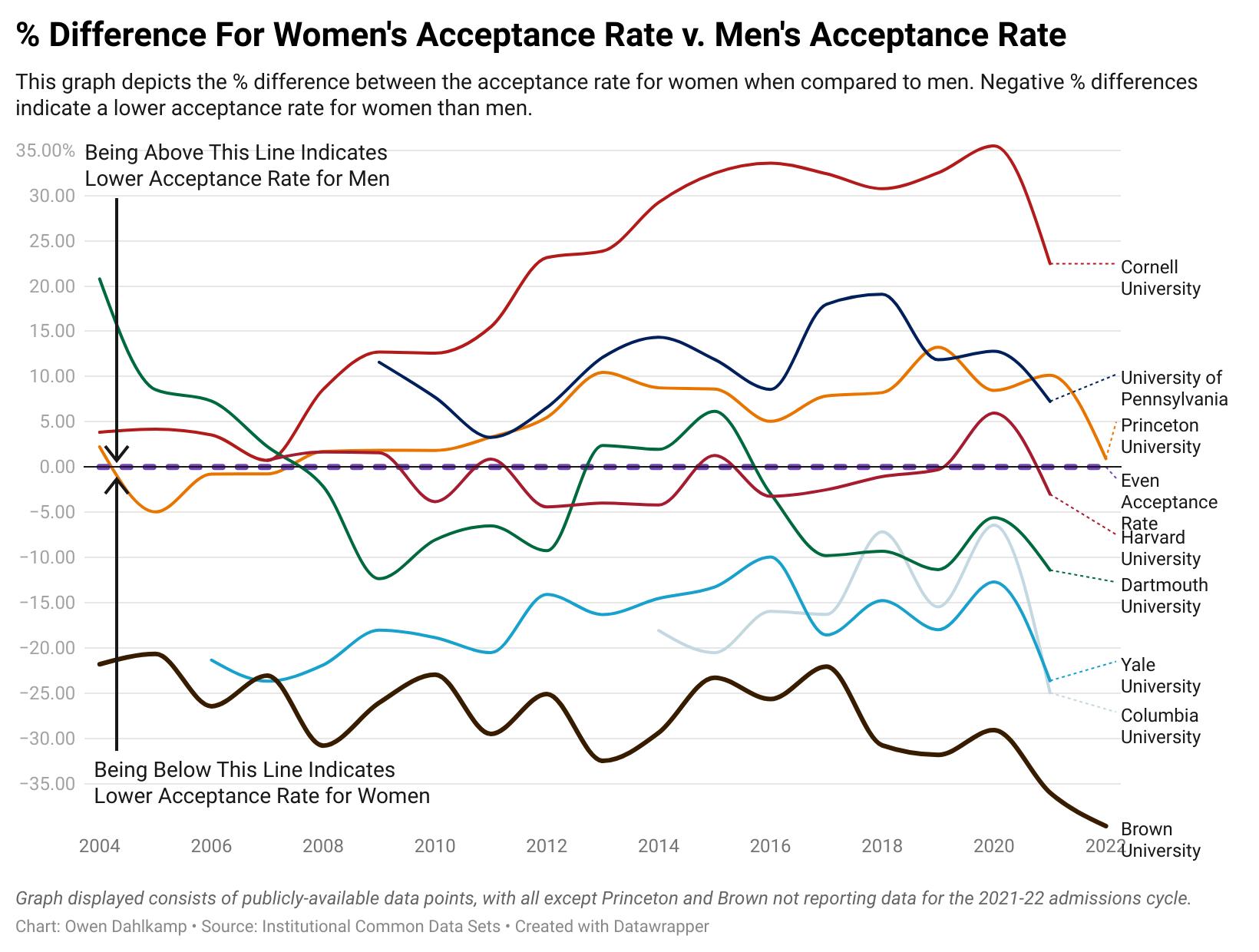 BY OWEN DAHLKAMP
SENIOR STAFF WRITER
BY OWEN DAHLKAMP
SENIOR STAFF WRITER

s ince the 1980s, female enrollment has consistently surpassed male enrollment in higher education. In the past 20 years, the proportion of women to men applying to universities has also increased. But at Brown, the number of accepted applicants who identify as women has remained about equal to men, making the admission process more selective for women applying to the University.
In the 2021-22 application cycle, 6.73% of male applicants were accepted to Brown, while only 4.06% of women were.
In 2021, Brown had the most female-dominated applicant pool in the Ivy League, boasting the greatest numerical difference between male and female applicants compared to
SEE ADMISSIONS PAGE 3
Gender gap in tenure-track faculty positions persists
U.

is no exception.
Refugee care center empowers women
BY NEIL MEHTA UNIVERSITY NEWS EDITOR
At universities across the country, women occupy fewer tenure-track academic positions than men. Brown
ARTS & CULTURE
Among full professors at the University, women occupy 118 positions while men occupy 309 as of 2022, according to the Office of Institutional Research. Gender is categorized as a binary in the University’s data system per federal law, according to the Diversity Dashboard.
“Nationally, women face discrim-
SEE TENURE PAGE 7
Students discuss pursuing fashion, art, academics at U.
Designers Nora Cowett
’24, Phoebe Dragseth
’24 discuss creative processes, aspirations
BY RYA VALLABHANENI ARTS & CULTURE EDITORAlthough Brown offers many academic opportunities in the arts, courses in
fashion are few and far between. While components of visual arts classes sometimes overlap with design, and students occasionally gain access to Rhode Island school of Design resources, the University does not offer a concentration in fashion.
Groups such as Fashion@Brown are trying to make up for this deficit. F@B
SEE FASHION PAGE 7
BY DANA RICHIE STAFF WRITERBeginning at 9 a.m., more than 40 women gathered outside the Women’s Refugee Care in south Providence on March 11. Volunteers carried boxes of food stocked with beans, cabbage and rice out of the food pantry in the basement, loading up hand trucks and wheeling food to the women’s cars.
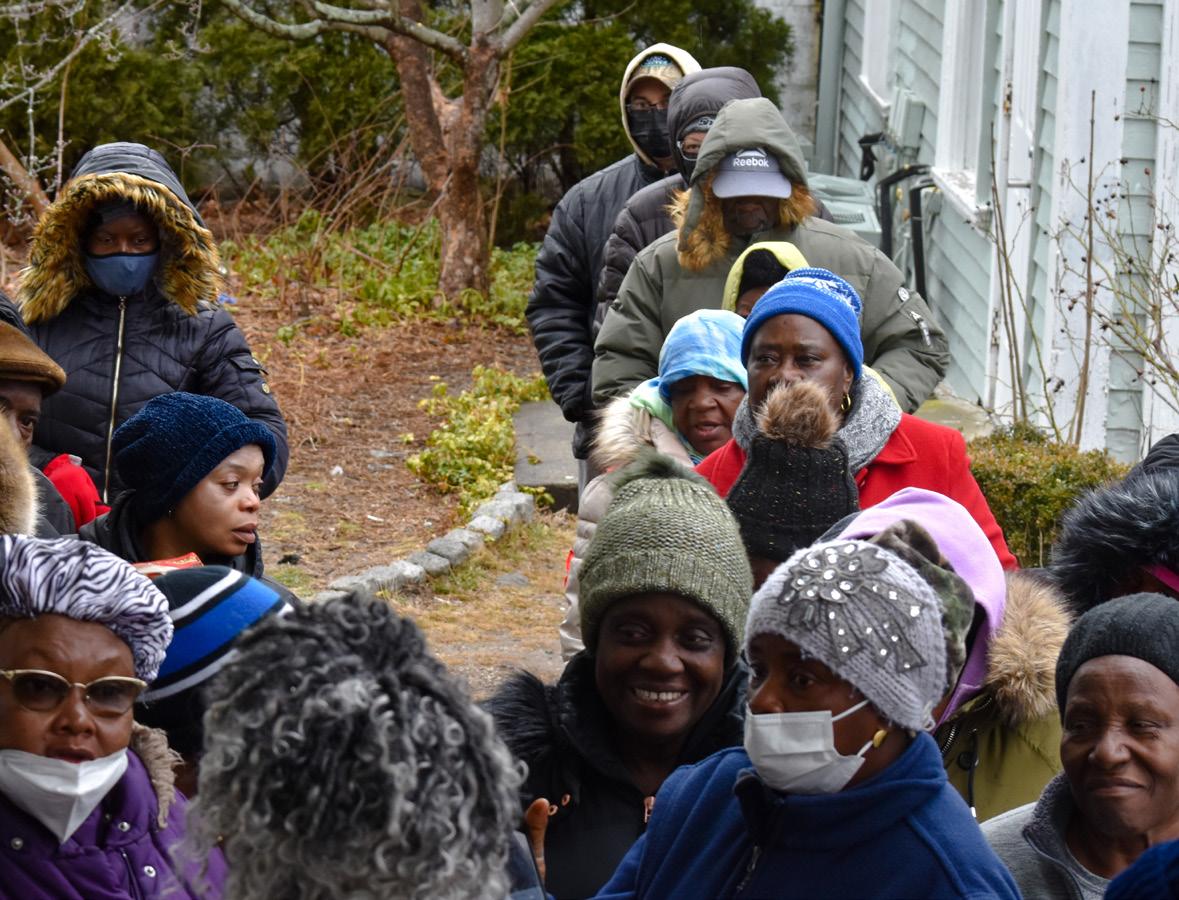
Led by director Aline Binyungu, warmly called “Mama Aline” by many at the center, WRC provides a range of programs — including the weekly food drive — to meet the needs of female refugees and their families as they adjust to life in America.
Binyungu and her husband Clement s habani founded the center in 2015. Both refugees from the Great Lakes region of Africa, the couple was inspired to open the center to support women from that area. Now, according to Binyungu, they serve “people coming from all over” including Liberia, the Ivory Coast, Haiti and s enegal.
Because of their backgrounds, Binyungu and s habani are committed to a holistic and community-based approach to service. “Being a refugee, we saw that before becoming self-sufficient, it takes a long time because there are many pieces that have to be put together, and sometimes, it’s overwhelming,” s habani said.
The couple originally fled their home in the Democratic Republic of the Congo out of fear of government retribution for their advocacy in sup -
port of human and women’s rights. After spending six years seeking refuge in Thailand, the couple and their five children were granted asylum in Providence in 2014. Binyungu said that it was initially difficult to adapt to life in the U. s . because “nobody spoke our language, (there was) no community (and) it was cold.”
According to Binyungu, the couple decided to center women in their
SEE CENTER PAGE 8
Nearly two-thirds of U. applicants identify as women, experts discuss possible explanations
task force works to investigate possible differences in faculty experiences
METRO
Center focuses on helping women heal, creating community in new cityDANA RICHIE / HERALD Aline Binyungu co-founded the center with her husband Clement Shabani in 2015 to help other refugees adjust to life in America.
In Photos: Community members reflect on women that inspire them
BY THE HERALD PHOTO TEAMI n honor of Women’s History
Month, The Herald’s photography
team spoke with female faculty, staff and students about a woman in their lives who inspires them. Folks described various attributes
that they admire, including professional perseverance, selflessness and excellence in their respective fields despite hardships.
When Cynthia Ellis, associate dean of student support services and adjunct lecturer of cognitive, linguistic and psychological sciences, graduated college, social psychologist Valeria Lovelace took her on as a volunteer for “Sesame Street,” for which Lovelace served as director of research. Ellis remembered being inspired by Lovelace to trust her instincts and be confident in the pursuit of her dreams.
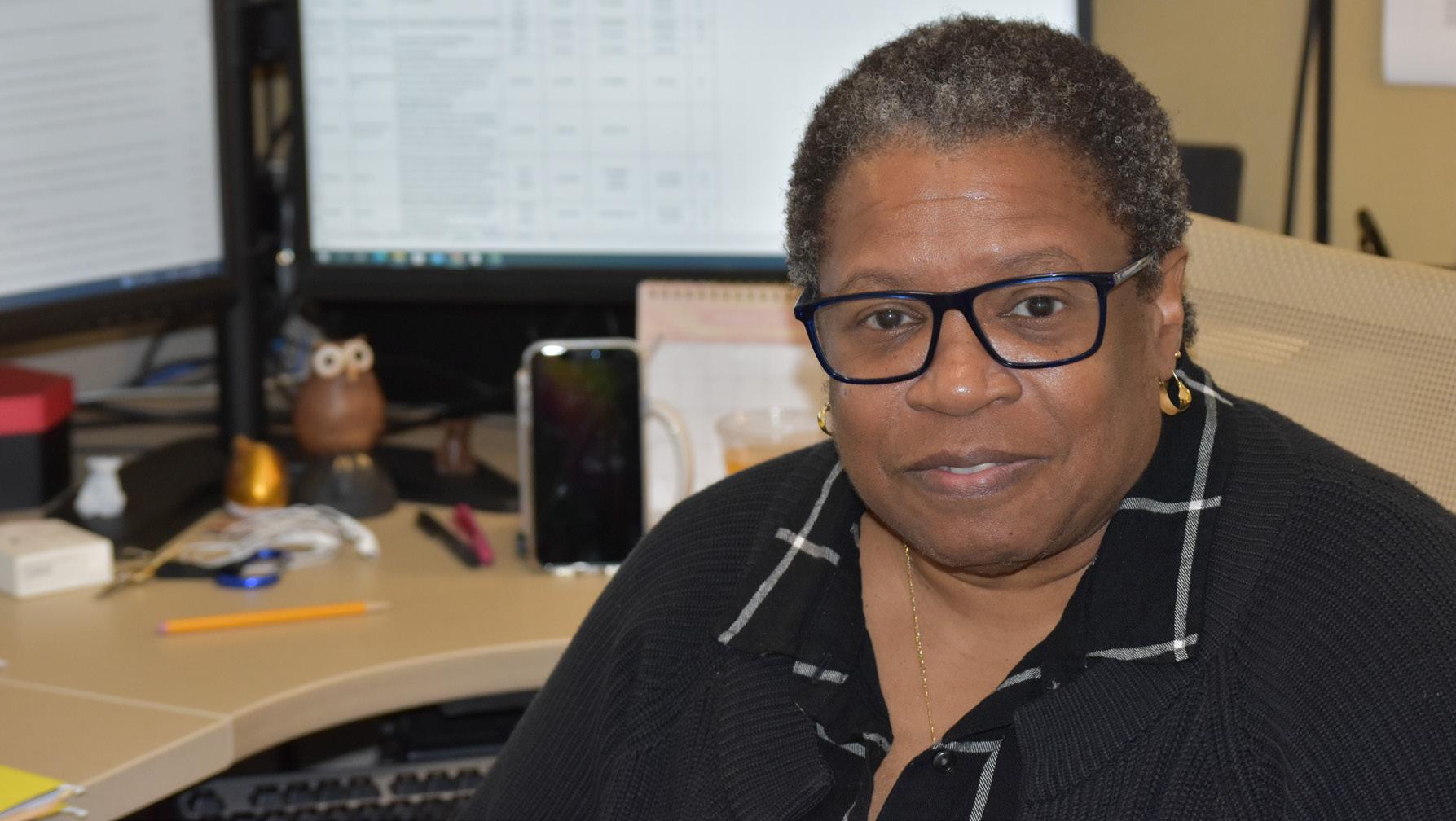
Christine
long as she can remember. When Jeong’s mom immigrated to the United States from South Korea, she left “behind all of her friends and all of her community that she’d been building. … I cannot imagine the sacrifice she must have made,” Jeong said. “Having the strength to do that has always been inspiring.”
Warren Alpert Medical School displays #WallsDoTalk exhibit
BY MIRA WHITE SENIOR STAFF WRITERAs part of its celebration honoring 50 Years of Medicine at Brown, the Warren Alpert Medical school hosted the opening of the #WallsDoTalk exhibit, which aims to visually spotlight women in the medical field who are often forgotten when professionals are highlighted on physical spaces in medical schools.
Launched in 2017 by Julie silver, associate professor and associate chair in the Department of Physical Medicine and Rehabilitation at Harvard Medical school, the #WallsDoTalk project aims to empower medical students to be conscious of potential stereotypes in their physical learning environments while also combating gender inequity within the medical industry at large, according to the project website.
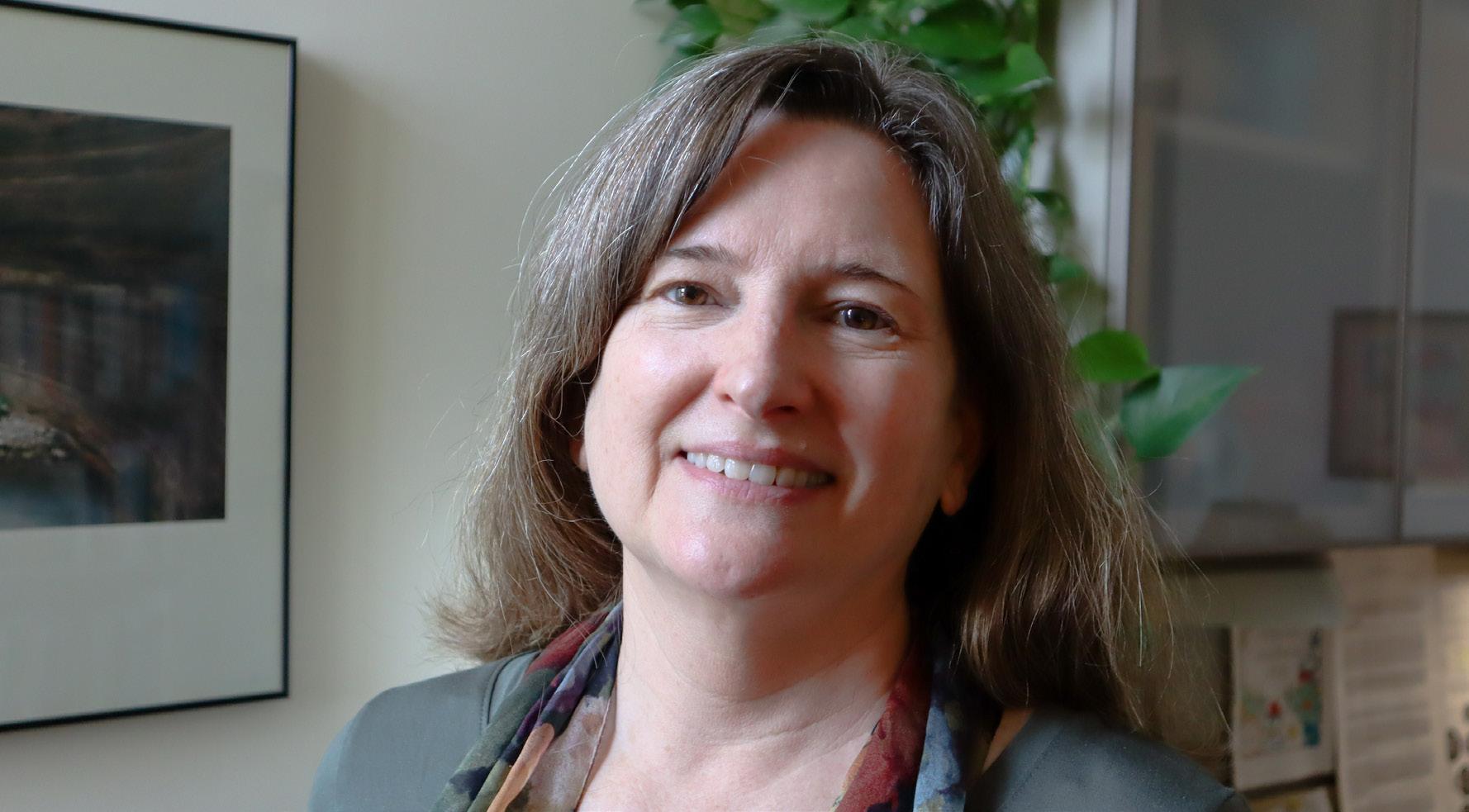
The #WallsDoTalk challenge invited students to design alternative walls of honor — physical spaces in medical schools that uplift prominent figures within the industry — which predominantly featured women; a stark contrast to the common images of men that typically decorate the walls of these institutions. Out of the submissions, nine were selected to be on display at Warren Alpert as a way to challenge students’ conceptions of what an inclusive environment can be.
The exhibit opened at the University March 7 in honor of International Women’s Day. The opening featured three speakers — silver, simone Thavaseelan, associate professor of surgery and Cynthia Peng, resident in psychiatry at Brigham and Women’s Hospital.

The event opened with silver, who introduced #WallsDoTalk and explained its influence on her medical career. She highlighted how the project “focuses a lot on the invisibility of women and people from underrepresented groups” in the medical field.
silver said that there is a “glass ceiling in the medical community,” and en-
couraged exhibit attendees to engage in further conversations about how women can break it.
silver touched on several challenges women in medicine face, including the gender pay gap, differences in promotion rates and underrepresentation from medical academia. she added that “we need to change the culture of academic medicine,” and the #WallsDoTalk exhibit is an important first step towards amending such “structural discrimination.”
Peng compared her experiences in the medical field to a sort of pyramid: There’s a “sense of climbing the ladder of the hierarchy of the ivory tower in the medical community.”

she proposed a redesigned stratum in which “all participants have the opportunity to be a bass or a flier, supporting other women in medicine.”
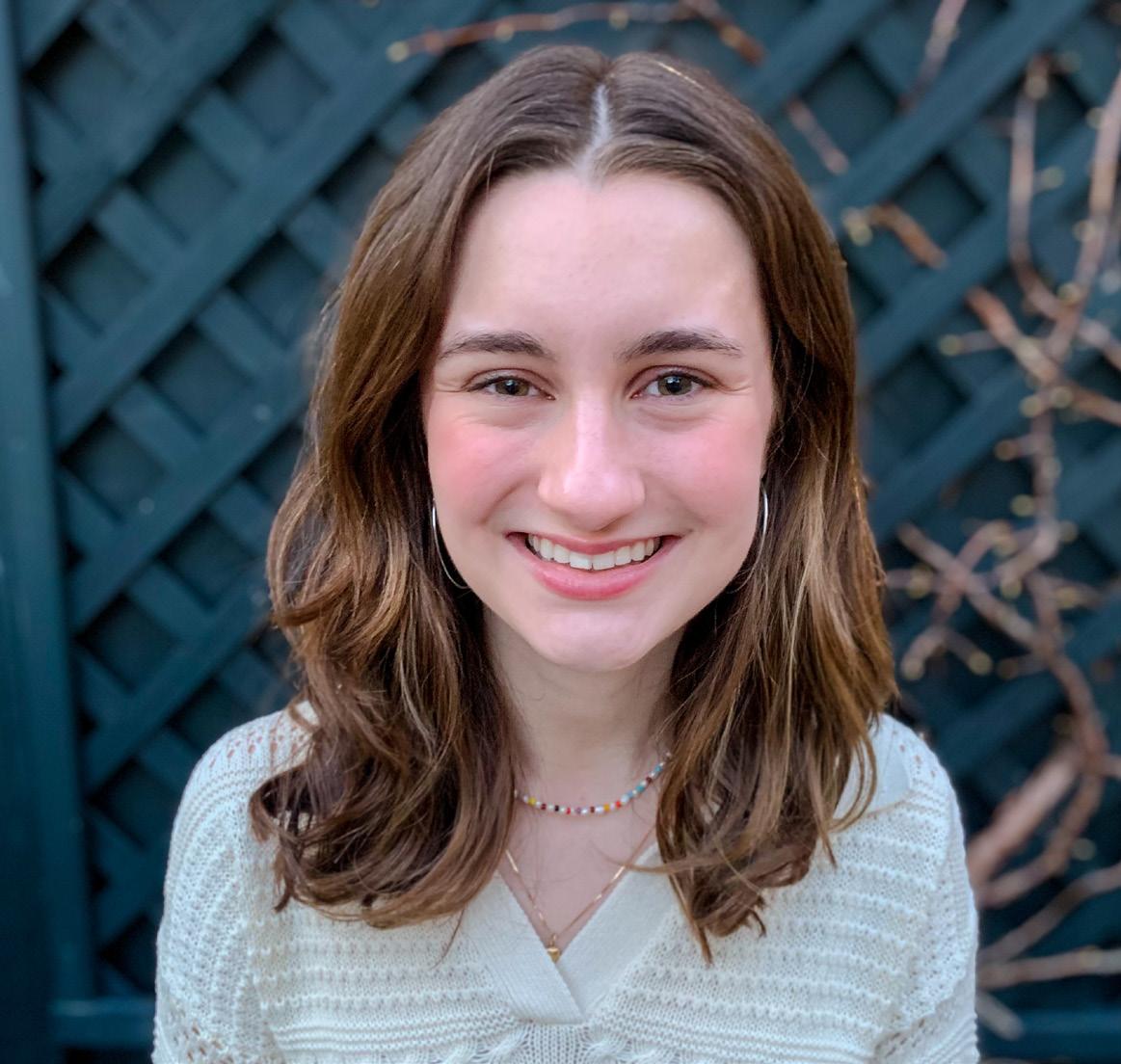
Thavaseelan, a urologist, also discussed the different experiences for men and women practicing in the medical field. According to Thavaseelan, “women in urology (more often) practice in academic medical centers (and) are less likely to be employed in private practice settings, which may influence some of
the salary gap.”
“The women in my field, following Dr. silver’s footsteps, have added to the literature and data about these disparities,” Thavaseelan said. “They do this on their own time so that you can have the data to walk in the door to create change.”
Thavaseelan acknowledged the potential for women to act as catalysts for
change within the medical field, but not
ed that they first must “figure out (their) ‘why’” — what personally motivates them to pursue a career within this industry. “I invite you to think about your ‘why,’” Thavaseelan said. “Because although the backlash is severe, the potential opportunity for change is great.”
1
peer institutions. To examine and understand the driving forces behind this difference, The Herald conducted a data analysis of the Common Data s ets of all eight Ivy League universities and spoke with experts on the subject.
The Common Data s et, a reporting tool used by higher education institutions across the country, only reports applicants in the gender binary of male/female, with applicants outside of the gender binary categorized according to their sex assigned at birth.
Diving into the Data
s ince at least the 2003-04 application cycle, women have consistently outnumbered men in Brown’s applicant pool by at least 2,000 applicants. That gap has only continued to grow in recent years. Out of the 50,649 total applicants to the
UNIVERSITY NEWS
class of 2026, 18,939 were male and 31,710 were female — a difference of nearly 13,000.
In this trend, the University stands apart from its Ivy League peers. In the past two decades, Brown has maintained a female-dominated applicant pool. Last application cycle, just under 63% of Brown’s applicant pool identified as female, compared to Yale’s 58%. Cornell has only seen female applicants outnumber male applicants in 2021. For Princeton, the applicant trend has shifted to more women then men just in the last two years.
Even with the increased number of women applying, Brown accepts relatively the same number of men and women each application cycle, resulting in fairly similar enrollment numbers.
“There’s a consensus among people who are in the admissions business,” said Kevin Carey, vice president for Education Policy and
knowledge management at New America. A larger gender gap in student enrollment is “a marketability problem,” while a university with an equal gender ratio is an “attractive, desirable place for people to enroll.”
“They’ve got to admit fewer women than men,” said s asha Chada, CEO of college consulting company Ivy s cholars. “They have to make the process more selective for women than for men.”
It is common practice “to put a thumb on the scale in order to achieve a desired gender ratio,” Carey said.
This results in much lower acceptance rates for women than men — more than two percentage points lower at Brown for the 2021-22 application cycle. The percent difference between the acceptance rates for men and women at Brown is the largest among the Ivies.
Chada anticipates that, in the future, balancing gender ratios may be
challenged under the Equal Opportunity clause of Title IX as discrimination against female applicants.
The impending s upreme Court decision that will determine the fate of affirmative action — the “compelling interest” of universities to consider race in admissions — could also impact admissions policies around gender, Carey said. If affirmative action is overturned, plaintiffs might begin to also challenge the “compelling interest … when it comes to gender composition.”
Associate Provost for Enrollment and Dean of Undergraduate Admission Logan Powell did not respond to multiple requests for comment.
What attracts such a high number of women applicants?
Carey said that the increasing number of female applicants to universities can be partially attributed to “gendered labor markets.”
“Once you get above the less
skilled, lower paid sector,” in female-dominated fields such as education and healthcare, “almost (all the jobs) exclusively require some kind of college credential,” Carey said.
Brown specifically is revered for its humanities programs, Chada said, which historically draws “more from female prospective undergraduate populations than male prospective undergraduate populations.”
The University’s political and social reputation may also serve as a motivating factor for women applicants. Brown’s perceived liberal political landscape may prove more attractive to women, who are more likely to identify as liberal.
According to Felicia s alinas-Moniz, director of the s arah Doyle Center for Women and Gender, “having a resource like ( s DC is also) something that many women applicants may consider” when choosing which universities to apply to.
Women, non-binary faculty members discuss experiences in academia
Panelists share stories of workplace misogyny, liberation in academic underestimation
BY SOFIA BARNETT UNIVERSITY NEWS EDITOROn Tuesday, students gathered in the Graduate s tudent Lounge for a faculty panel on the experiences of women and nonbinary people in the world of academia organized by graduate community fellows Michal Golovanevsky G s and Catherine Chen G s

The panel included four faculty members — Françoise Hamlin, associate professor of history and Africana studies, Brenda Rubenstein, associate professor of chemistry, Ellie Pavlick, assistant professor of computer science and Emily s prague-Klein, assistant professor of chemistry.
To kick off the conversation, Hamlin shared her experiences as a female professor engaging with male students.
“The idea of getting respect in the classroom, particularly with male students, is convoluted,” she said. “I’ve had to remind them, ‘hey, you know that degree that you’re trying to get as an undergrad? I got the same exact one before you were even born.’”
“I’ve had students challenging me on things that they haven’t even read,” Hamlin added. “It can be damaging to your self esteem to a point, but also, it can be really hard to get support from your colleagues.”
Hamlin noted that she has experienced “disrespect and underestimation” not just from male students, but also from several male colleagues as well.
According to Pavlick, the trend of women and nonbinary people in academia being underestimated is “a double-edged sword.”
“In a way, I do find (underestimation) liberating,” she said. “There’s like this little narrative you get to play out in your head, it’s like you’re Clark Kent, right? Like, joke’s on them when it turns out that I’m actually super badass.”
Assistant Professor of Computer Science Ellie Pavlick advised attendees to “basically become the expert” to deal with those who will underestimate their work, while panelists stressed the vaue of networking with other women and non-binary people in male-dominated fields.
s prague-Klein addressed the downside of this underestimation, noting that oftentimes it can be “very demoralizing.”
“I have also dealt with — to put it very bluntly — angry white man syndrome, where they think that all of your accomplishments come from the fact that you’re a woman or an under-represented minority or person of color,” she said. “I think ultimately, you just have to take a step back and realize that this is not about you and the best thing you can do is to do your work and do it well.”
Pavlick expressed a similar sentiment, advising attendees to “basically become the expert” in order to better deter “people who will underestimate your work.”
Hamlin shared an anecdote to Pavlick’s point, detailing an encounter where a colleague questioned the success of her then-recently published book.
“This person cornered me in the
kitchen and said, ‘oh my gosh, your books have been winning all of these awards — what did your publisher do in order for you to get these awards,’” she said. “It’s just stuck with me after … that they really thought I had someone working on my behalf to win prizes. That’s what we’re up against.”
On top of grappling with the constant trend of underestimation in their respective fields, panelists also shared instances of stereotyping and direct misogyny they’ve endured throughout their time as academics.
According to Pavlick, she has encountered “bizarre” comments made by male colleagues during hiring conversations.
s ome comments for women applicants noted that “‘she was a little opinionated in the one-on-one which could be a problem,’” Pavlick said. “ s he has opinions, what’s the problem? There was no context, just (that) she was a little bit opinionated.”
“There was also a woman who (re-
ceived comments) like ‘she wasn’t very bubbly,’” Pavlick added.
Rubenstein also spoke on past comments they had received from men in their field, specifically sharing a story about how a male colleague reacted to their haircut.
“I do a lot of different stuff with my hair and at that point, I had cut my hair short,” Rubenstein said. “This person just grilled me in his office about how my hair was just wrong and therefore my science must be wrong.”
Despite experiencing sexism throughout their careers, panelists expressed gratitude for the network non-male faculty members have been able to form, citing the importance of community-building as a main pillar of advice to attendees.
Hamlin explained that she finds “great fulfillment” in being a resource for other women in academia, pointing to the importance of “paying it forward.”
“I always recognized that I’m here because people helped me and mentored me,” she said. “We don’t do this by ourselves, even though we like to think we do.”
Pavlick acknowledged that while sexism exists in academia, “it can help to (approach these situations) with confidence,” she said. “It’s much easier to just … imagine if (you) were a white guy right now.”
Audience member Annette Lopez Gs said that the panelists’ advice was “incredibly helpful.”
“The opportunity for me to see other women in s TEM, even in 2023, as a woman of color, it’s great,” Lopez said.
Chen and Golovanevsky hoped that audience members would find representation in their planning of the panel.
“I went to a women’s college for my undergrad, and I wanted to kind of bring a little bit of that community here,” Chen said.
The women of Brown Athletics: Bears sports spotlight
‘One of the premier volleyball players in the Ivy League’: Beau Vanderlaan ’25
BY AUSTIN XIANG STAFF WRITERVolleyball star Beau Vander laan ’25 — a two-time First All-Ivy selection and the 2021 Ivy League Rookie of the Year — started her athletic career kicking soccer balls. Not until seventh grade, when her best friend suggested they try playing volleyball together, did Vanderlaan switch from scoring goals on the field to recording kills on the court.

But volleyball was not as easy for Vanderlaan then as she makes it seem now.
“I was so terrible,” Vanderlaan said.
“In my freshman year of high school, my coach called me ‘Bambi on ice’ because I was so uncoordinated. But I just loved it, kept working at it and it worked out.”
In Vanderlaan’s first year at Brown, she tied a program record with an Ivy
dream,” she said.
Even before Vanderlaan’s rookie campaign, teammate sophia Miller ’23 already knew Vanderlaan would be a valuable addition to the team.
“I remember when Beau came on an official visit to Brown. She was just this bubbly, outgoing person, ” Miller wrote in an email to The Herald via Brown Athletics. “Without even knowing at the time how good
ately that we needed to have her playing for Brown.”

he is an elite learn er,” Assistant Coach Taylor Virtue wrote in a message to The Herald via Brown Athletics. “The way she pursues each goal ahead
of her is inspiring to everyone lucky enough to be around her.”
In her sophomore season, Vanderlaan led the league with 1.35 blocks per set and a .473 hitting percentage, earning a unanimous First Team AllIvy selection.
“This past year, I’ve learned a lot,”
gious energy onto the court that just uplifts other players,” Miller wrote. “she’s developed into a crucial leader for the team, a steady voice on and off the court.”
Vanderlaan has big dreams for the rest of her Bears career, hoping to win yet another Ivy League Cham -
BY LYDELL DYER STAFF WRITERsoccer star Brittany Raphino ’23.5 “is one of the most caring and selfless people I know,” wrote Head Coach Kia McNeill in a message to The Herald via Brown Athletics. “ s he loves the players around her, and really plays for them — she does not play for herself or for accolades — she plays for her team. she cares just as much about her teammates’ success as she does her own.”
Raphino first took the pitch when she was only three years old, inspired by her father’s life-long love of the sport, and never looked back.
Raphino began her Bears career in 2019. “she came in as a freshman a bit shy, nervous and really didn’t know or have the confidence in her capabilities as a player,” McNeill wrote. “Today, she is a completely different woman. she is confident, communicative, a leader, an encourager and really plays with her heart on her sleeve.”
In her first season, Raphino was named Ivy League Rookie of the Year, First Team All-Ivy League, Eastern Collegiate Athletic Conference Rookie of the Year and First Team All-East Region. she also helped the team win its first Ivy League title since 1994 and return to the NCAA Tournament.
“On the field, you can always rely on Brittany to put her best foot forward,” wrote teammate s heyenne Allen ’23 in a message to The Herald.
s he’s an incredibly hard worker … the way she works inspires everyone to … play to their potential! she is a
natural-born leader on the field … she is our top-scorer and is a huge contributor to almost every, if not all, of our team wins.”
Raphino is most proud of the relationships she has forged with her teammates. “I have met my best friends for life,” she said in an interview with The Herald. “My teammates are everything to me and they have taught me so much. I wouldn’t be where I am today without them. No one and nothing will ever beat this team.”
Together, Raphino and her teammates have led Bruno to three consecutive Ivy League Championships.
“I feel like I was part of something so special,” Raphino said. “We made so much history together. They are just so amazing. Having the opportunity to have this season together is just everything — it’s the highlight of my career.”
“Brittany is the most caring person
CALENDAR
I know,” s heyenne Allen ’23 wrote. she is someone you can immediately feel comfortable with, on and off the field … Any person would be lucky to have Brittany in their life. I believe she leaves a mark on every person she meets. she values her relationships deeply.”
Over the last two seasons, Raphino has continued to add to her resume. In 2021, she was named a second team All-American. In 2022, she was named a first team All-American. She won Ivy League Offensive Player of the Year, was a first team All-Ivy selection and earned first team All-East Region honors in each of her past two seasons. This year, she was named to the U.s U-23 Women’s Youth National Team, competing with the team from March 12-18.
“It was a dream come true,” she professed. “The whole time, I couldn’t stop smiling. I was walking to the sta-
TODAY’S EVENTS
João Melo Book Tour 1:00 p.m.
Meiklejohn House
Baseball vs. Bryant 3:30 p.m.
Murray Stadium
TOMORROW’S EVENTS
Biomedical Engineering Seminar:
Megan Kizer
11:00 a.m.
Barus and Holley
CLS International Film Series: “La Llorona”
6:00 p.m.
Meehan Auditorium
dium and I realized that I was playing in front of a huge crowd and against players I have looked up to since I was younger, my heroes in the game. There are no words to describe that moment. I am really proud of myself for getting there. I still have one more season here (but someday) I want to play professionally.”
With an “insatiable desire to improve” and an unyielding work ethic, McNeill believes Raphino “has what it takes to play at the professional level.” “she has had a huge part in all of those championships, and seems to continue to grow every year … she is really the heartbeat of this team,” she wrote. “she is the one who gets everyone going in the team huddle, and just knows how to bring out the best in people. she has really raised the bar for our program as a whole, and it has been amazing to witness her growth over the years.”
Joukowsky Institute’s Open Collection Hours 2:00 p.m.
Rhode Island Hall
LGBTQ Center Grad & Med-ley
6:00 p.m.
Stonewall House
After the Postcolonial Caribbean: Memory, Imagination, Hope 2:00 p.m.
Watson Institute
Achieving security in a World at War with Itself
7:30 p.m.
Page-Robinson Hall
As the first woman promoted to a job position coaching in NCAA Division I football, Heather Marini has already made history.
“Football is such a great game and it’s awesome to be able to share that with other women,” Marini wrote to The Herald. “It’s been awesome to see programs consider the whole population when hiring the best coaches and staff, and I know that means more women will continue to
sion I baseball game.
“I (was) just taking deep breaths, journey to Brown baseball was not without resistance.
“Every time I got to the next level, parents and coaches would just come up to me and ask, ‘oh, when are you going to switch to softball,’ as if it was this … inevitable thing that must happen because of biological differences,” Olivia Pichardo said in a fall 2022 interview with The Herald. “But I always knew that it was gonna be
Women that play baseball “are never given the benefit of the doubt,” said Olivia Pichardo’s father, Max Pichardo, who coached his daughter in the Forest Hills Youth Baseball League in Queens from age six to 12.
tioned. They get mocked. They get ridiculed. People assume that they don’t know how to play the sport.”
Recently, Max Pichardo was contacted by Forest Hills Little League to inform him that a growing number of girls were registering to play baseball.

“That really meant a lot to me,” Olivia Pichardo said. “Over the years, I’ve come back to umpire some of the games and I saw more and more girls playing baseball. It’s really nice to see this evolution.”
Olivia Pichardo hopes her accomplishments will inspire young women to continue pursuing baseball, including a group of players from the
the oldest-running all-girls baseball league in the country — who were watching in the stands when she made her debut.
“If you have a dream or a goal that’s not being encouraged because nobody else has done it before, hopefully Liv’s able to serve as inspiration,” said Head Coach Grant Achilles. “As a father of two girls, Liv’s somebody that I hope our daughters look up to for that purpose.”
“Nobody thought it was possible until it happened,” Max Pichardo said. “There needs to be one person to show what is possible.”
get opportunities in the sport.”
Hailing from Australia, Marini was unfamiliar with American football until her husband took her to a game. she has since immersed herself in the sport as both a coach and a player.
Marini played for the Australian national team in the 2022 International Federation of American Football Women’s World Championships. Now, she continues to play as a quarterback and punter for the Boston Renegades in the Women’s Football Alliance, winning the league championship in 2021 and 2022.
Marini also coached the Monash Warriors Gridiron Club in Australia for six seasons, where she coached current NFL defensive end Adam Gotsis.
Before coming to Brown, Marini was
2017, 2018 and 2020.
After connecting with Head Coach James Perry ’00 during her tenure with the Jets, Marini was hired as a quality control assistant for the Bears in 2019. In her first season, the team doubled its scoring output from the previous year and Perry made the historic decision to promote Marini to coach for the quarterback position.
After her promotion, Marini coached quarterback EJ Perry ’22 and the Bears offense to a historic 2021 season. Following the season, EJ Perry became the second player in school history to be in-
couting Combine and the second player Marini sent to the NFL in her 16-year coaching career.
“My coaching philosophy has always been to develop thinking athletes, which to me means coaching to continually improve skills, further understand the game and encourage the right questions as well as working on all aspects of athleticism, including mental preparation,” Marini wrote.
Marini has earned the respect of players and coaches alike, establishing herself as one of the team’s most important assets on and off the field.
CORRECTION

of the position,” James Perry wrote in a message to The Herald. “Heather brings great energy and insight into the film room and practice field. She is an outstanding member of the staff.”
“Nothing happens overnight — this is my 16th year coaching football, and I’m incredibly grateful for the opportunities I’ve been able to experience along the way,” Marini wrote. “I’ve had to work incredibly hard to be in the position that I am in and I love being able to develop my relationships with players and coaches along the way.”
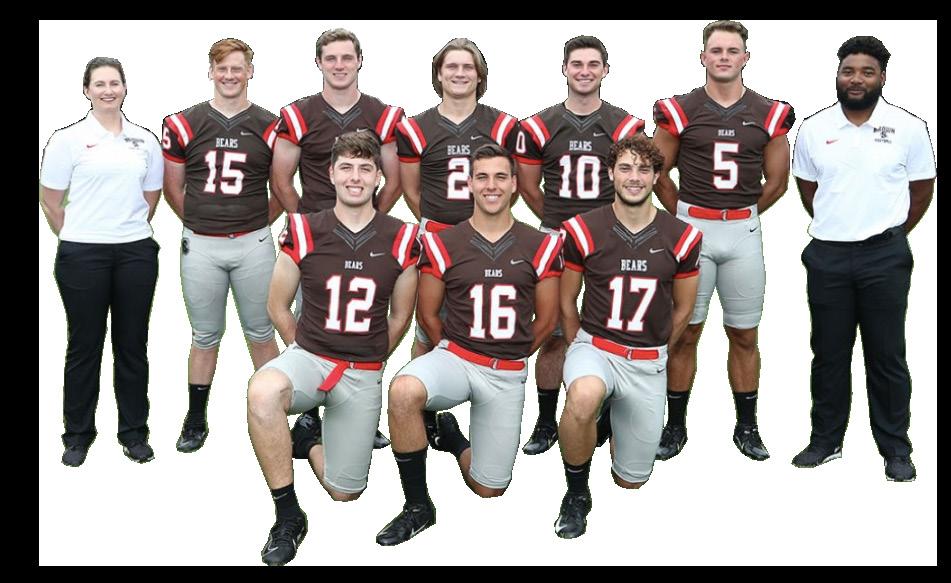
Correction: The Herald incorrectly printed the approval rating of President Christina Paxson by class year on March 20, 2023 in the article titled “Elections, friends, admissions: The Herald’s Spring 2023 poll.” A correct version of the graphs is printed below and the changes have been reflected online. The Herald regrets the error.
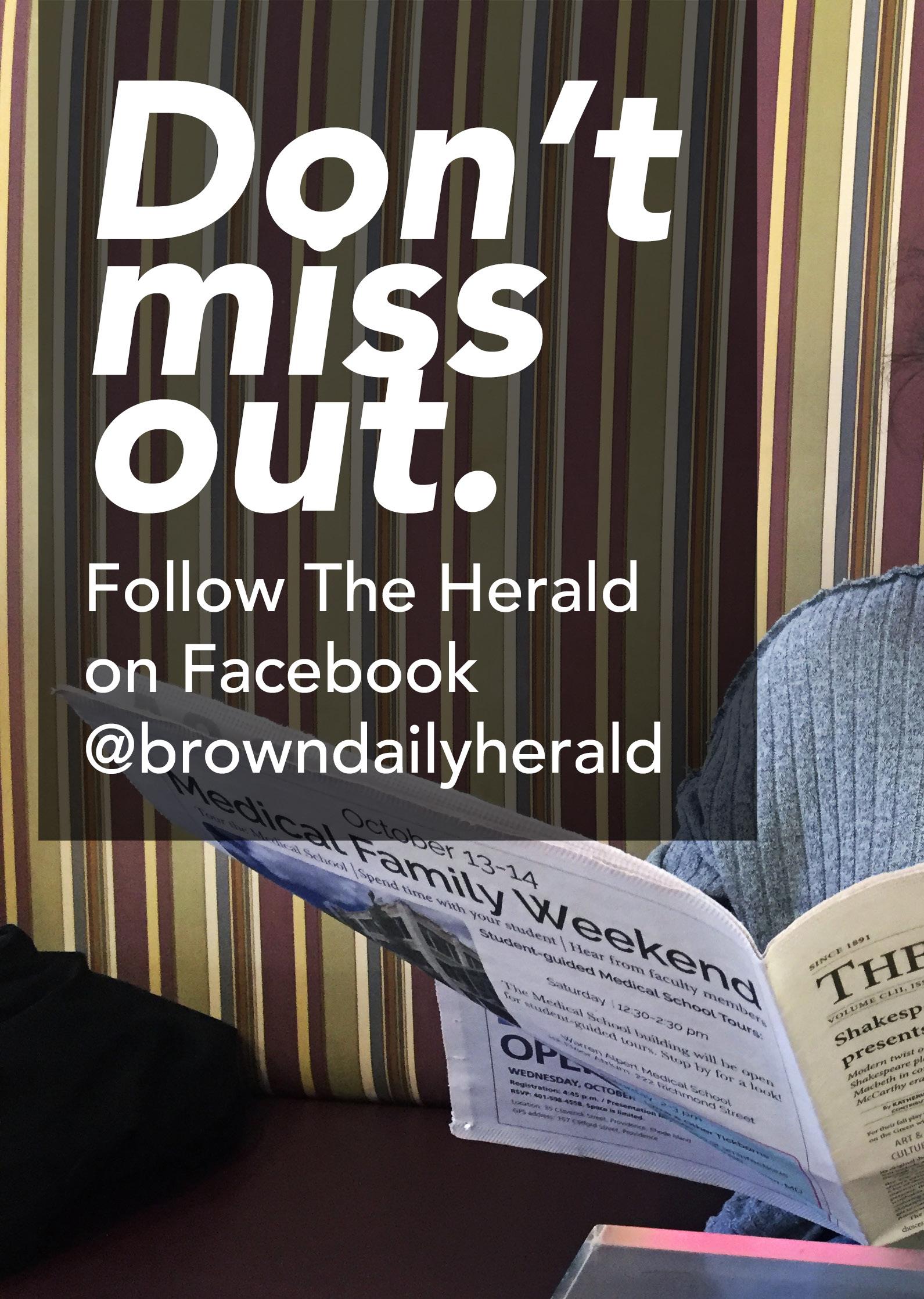

‘One person to show what is possible’:
SENIOR STAFF WRITER
A coach with ‘great energy and insight’: HeatherMarini COURTESY OF BROWN ATHLETICS
Simon ’25: What the past of Pembroke College can teach us about gender and community on campus today
You’ve probably passed them dozens of times on a rushed walk to Andrews Commons or after a class in smith-Buonanno Hall — the stone plaque by the flowerbeds and the seal that many students still avoid out of superstitious habit. These little monuments are tributes to a significant period of Brown’s history: when Pembroke Campus was once Pembroke College — and when women at Brown did not always fit so seamlessly into campus life. Beyond the physical imprints on North Campus, it’s also possible to draw on the rich legacy of Pembroke College through University archives. One such collection, the Pembroke Center Oral History Project, contains recorded interviews with dozens of female and nonbinary alumni from Pembroke College and Brown University across the 20th and 21st centuries. In its careful observation of the past, the Oral History Project becomes an invaluable resource when confronting questions about what it means to negotiate gender, identity and community on campus today. The conversations with the women of Brown and Pembroke show us that, even as educational disparities lessen on campus, gender-based communities remain as valuable today as they were a century ago and require just as active cultivation.
Pembroke College — formerly known as the Women’s College — educated female students from 1891 until 1971, when classes and dormitories at Brown finally became coeducational. since the late 1900s, archivists at the Pembroke Center have conducted interviews with women whose lives span a majority of the College’s legacy, including alumni who graduated as long ago as 1911. some of their descriptions of student life feel nothing short of otherworldly — memories of shirtwaists and full skirts and orchestras that played “The star spangled Banner” in Alumnae Hall. Pembroke alumni also described their academic experiences, recounting the moments when math and science departments opened their class-
es to women for the first time, and how their education shaped their post-grad lives.
The oral histories also reveal something alive and tender at the heart of each alumna’s memory of their undergraduate life — an account of what it meant to attend a women’s college during a century that saw radical changes in social and political ideas about gender. Pages of transcripts were filled with vivid descriptions of communal, female experiences amongst students at Pembroke
ly about the sororities, singing groups and activist organizations they participated in while at Pembroke.
It is not surprising, then, that in 2023 there is a similar eagerness amongst students to articulate how groups oriented around gender have shaped their college experience. Hannah Dunn ’23, a member of Alpha Chi Omega and Brown Women’s Pre-Law society, described the comfort she gained from relationships with female mentors, particu-
current events. In creating traditions centered around identity, she has discovered and fostered a particular form of joy amongst people who “care about the same things I do.”
— ones that seemed to transcend class years. Helen, class of 1922 spoke of dancing with hallmates to jazz music in Miller Hall in the early mornings and “haul(ing) single bed mattresses onto the fire escape” to sleep outdoors in the spring. Mary Jane ’56 fondly recalled the warmth of the women in the co-operative who supported her as she became the first Pembroke student to pursue engineering at Brown. And Penelope ’68 described the solidarity she felt with the five fellow Black women in her class as they witnessed the influence of the civil rights movement and women’s revolution on campus and formed the University’s Afro-American society — all while Pembroke underwent a process of integration into Brown. Often unprompted, the women in these interviews spoke longly and fond-
larly when she was a first-year. She asserted that there is “something about being in a community of women that’s very empowering and nourishing.” Dunn further connected the value of her sorority with her experience in groups for students of color on campus, noting how special it is to “share space only with people that share a similar background and identity with you, because there’s just an experience of life that they can just understand without being told.” Crystal Banh ’25 works to foster that same sense of understanding and visibility among non-male students as a Women Gender & sexuality Peer Counselor at the sarah Doyle Center, which she refers to as a second home. Banh and her fellow WGsPCs organize book groups, zine-making workshops and conversations about
There are some who might say that we’ve outgrown the need for the same kinds of gendered spaces that existed in the 1920s and ’50s — that they are unnecessary or even outdated at a modern, coeducational university. After all, it’s easy to move from the classroom to the dining hall to the dorm amongst bodies of all genders and subsequently believe that no gender is at work. But, as Banh notes, the dynamics of gender and sexuality continue to act on us today, whether we choose to acknowledge them or not. Our ideas about femininity, masculinity and sexuality have become much broader than the cisgender and heterosexual narrative that dominated the 1900s. sarah Doyle and stonewall House create spaces for women, trans and nonbinary students to come together in ways not possible fifty or eighty years ago. But this evolution will only continue to be possible if we consciously assert the value of those spaces and seek out people with whom we can be our most visible selves. The conversations we have about womanhood and gender identity will inevitably shift over the years, but the underlying importance of dedicating time, resources and attention to them is constant. students at Brown should view Pembroke, and the oral histories of the women who studied there, not as a relic of the far past, but as a reminder of what we might recount about our time at Brown decades from now — and what forces we will choose to shape it.
Alissa Simon ’25 can be reached at alissa_simon@brown.edu. Please send responses to this opinion to letters@browndailyherald.com and other op-eds to opinions@browndailyherald.com.
SINCE 1891
THE BROWN DAILY HERALD
133rd Editorial Board
Editor-in-Chief
Will Kubzansky
Managing Editors
Katy Pickens
Alex Nadirashvili
Senior Editors
Augustus Bayard
Caleb Lazar
Peter Swope
Kaitlyn Torres
Post- Magazine
Editor-in-Chief Kimberly Liu
News Metro Editors Emma Gardner
Rhea Rasquinha
Jacob Smollen
Julia Vaz
Science & Research Editor

Haley Sandlow
Senior Science & Research Editor
Gabriella Vulakh
Arts & Culture Editors
Aalia Jagwani
Finn Kirkpatrick
Rya Vallabhaneni
Sports Editor Linus Lawrence
University News Editors
Sofia Barnett
Charlie Clynes
Emily Faulhaber
Grace Holleb
Sam Levine
Neil Mehta
Haley Sandlow
Kathy Wang
Digital News Director of Technology
Swetabh Changkakoti
Opinions
Editorial Page Editor
Head Opinions Editor
Alissa Simon
Opinions Editors

Anika Bahl
Bliss Han
Melissa Liu
Jackson McGough
Multimedia
Illustration Chief
Ashley Choi
Photo Chiefs
Elsa Choi-Hausman
Dana Richie
Photo Editors
Mathieu Greco
Claire Diepenbrock
Rocky Mattos-Canedo
Lilly Nguyen
Kaiolena Tacazon
Social Media Chief
Sahil Balani
Social Media Editors
Julian Beaudry
Emily Faulhaber
Kaiolena Tacazon
Production
Copy Desk Chief
Brendan McMahon
Design Chief
Neil Mehta
Design Editors
Sirine Benali
Maddy Cherr
Ashley Guo
Gray Martens
Business
General Managers
Joe Belfield
Andrew Willwerth
Sales Director
Alexander Zhou
Finance Director
Eli Pullaro
Submissions: The Brown Daily Herald publishes submissions in the form of op-eds and letters to the Op-eds are typically between 600 and 900 words and advance a clear argument related to a topic of campus discourse. You can submit op-eds to opinions@browndailyherald.com.
Letters to the editor should be around 250 words and respond to an article or column that has appeared in The Herald, or critique or commend The Herald’s editorial decisions. You can submit letters to the editor to letters@browndailyherald.com.
Submissions undergo multiple rounds of editing. These rounds of editing generally take place over the course of one evening, and you may have to respond to edits late in the evening. If you know you will be unable to do so, please mention that in your email, and we will do our best to work with you.
Submissions can build on reporting from The Herald, reporting elsewhere, official statements from the University or other groups and other reputable sources, but they cannot break news or contain information that The Herald cannot verify. Because we cannot publish unsubstantiated information, failure to provide appropriate sources may mean we have to modify or remove unverified claims.
The Herald will not publish anonymous submissions or submissions authored by organizations. Leaders of student organizations can be identified as such but cannot write under the byline of their organization. The Herald cannot publish all submissions it receives and reserves the right to edit all submissions.
All submissions to The Herald cannot have been previously published elsewhere (in print or online — including personal blogs and social media) and must be exclusive to The Herald. Once your submission is published in The Herald, The Brown Daily Herald, Inc. owns the copyright to the materials.
Commentary: The editorial is the majority opinion of the editorial page board of The Brown Daily Herald. The editorial viewpoint does not necessarily reflect the views of The Brown Daily Herald, Inc. Columns, letters and comics reflect the opinions of their authors only.
Corrections: The Brown Daily Herald is committed to providing the Brown University community with the most accurate information possible. Corrections may be submitted up to seven calendar days after publication. Periodicals postage paid at Providence, R.I. Postmaster: Please send corrections to P.O. Box 2538, Providence, RI 02906.
Kate Waisel
@the_herald
facebook.com/browndailyherald
@browndailyherald @browndailyherald
Advertising: The Brown Daily Herald, Inc. reserves the right to accept or decline any advertisement at its discretion. 88 Benevolent, Providence, RI (401) 351-3372 www.browndailyherald.com
The Brown Daily Herald, Inc. is a financially independent, nonprofit media organization bringing you The Brown Daily Herald and Post- Magazine. The Brown Daily Herald has served the Brown University community daily since 1891. It is published Monday through Friday during the academic year, excluding vacations, once during Commencement and once during Orientation by The Brown Daily Herald, Inc. Single copy free for each member of the community. Subscription prices: $200 one year daily, $100 one semester daily.
Copyright 2023 by The Brown Daily Herald, Inc. All rights reserved.
Editorial: herald@browndailyherald.com Advertising: advertising@browndailyherald.com

“The dynamics of gender and sexuality continue to act on us today, whether we choose to acknowledge them or not.”
ination that limits their access to … tenure-track jobs,” wrote Leah VanWey, dean of the faculty, in an email to The Herald. “This takes the form of both being less likely to be offered a tenure-track teaching job and being more willing to accept a non-tenuretrack job.”
she also noted that women are cited less frequently in research, receive lower scores on teaching evaluations and are selected for fewer research grants than men.
VanWey described measures taken by the University to prevent gender bias in faculty hiring and the monitoring of the promotion of women.
she wrote that all University search committees are required to have a diversity representative that ensures “racial or gender bias is avoided as much as possible.”
Additionally, academic departments that report to the dean of the faculty — the humanities, social sciences, physical sciences and the Cognitive, Linguistic and Psychological sciences department — send advertisements for openings to the dean of the faculty for review.
“We compare the gender composition of the pool of applicants and the
list of finalists to national data on the gender composition of recent PhDs in the field,” VanWey wrote.
According to Professor of science and Neuroscience and Director of the Robert J. and Nancy D. Carney Institute for Brain science Diane Lipscombe, who also serves as the chair of the Task Force on the status of Women Faculty, the gender distribution among tenure-track faculty is due to “an accumulation of a huge number of things.”
she cited a lack of role models and bias against women during reviews for promotion as two causes of the nationwide gender discrepancies within tenure-track professorships.
Lipscombe added that childcare, a responsibility that often falls disproportionately on women, can also make it harder for early-career professors to “achieve what people are looking for.”
“When I started at Brown, I had two very young children under the age of three,” Lipscombe said. “Trying to park (on campus), and then giving a lecture, and then taking them to a doctor’s appointment and not having parking space when (I came) back — there (was) this daily additional challenge.”
For the past 10 years, of those receiving doctorates in the life sciences, more than half are women. But women
only make up between 30% and 40% of applicants to life sciences faculty positions at the University, Lipscombe said, describing the difference as “a huge fall off.”
VanWey wrote that while the University has not set an explicit goal for gender representation, “we clearly need to increase the representation and non-binary faculty across the ranks, especially among full professors.”
As chair of the Task Force on the status of Women Faculty, Lipscombe works with faculty across campus to examine “whether there are any gen-
business that initially began with her selling upcycled pieces on Instagram. When she decided to delay her start at the University due to the COVID-19 pandemic, Cowett dedicated much of her time to expanding her business.
“I took that opportunity to make a formal website (and) get registered as an official business, and I’ve been selling things through my website ever since,” she said. “It’s a bit hard to manage that and school at the same time, but it’s great to have my own space on the internet.”
In both her business and collections, Cowett is aiming to create a “more clear direction.”
“Before I was making a lot of oneoff pieces, and they were all very different,” she said. “Now I’m trying to create a pattern, where I make multiples in different colors (or) in different sizes” to create a more defined brand image.
der differences in responsibilities, opportunities and outcomes available to Brown faculty” and recommend changes to University policy, according to the Task Force website.
The Task Force will release a report of its findings later this spring, according to s ylvia Carey-Butler, vice president for Institutional Equity and Diversity. Carey-Butler noted that the report’s findings will provide more recent evidence regarding differences in gender representation across faculty.
“There will be findings in (the report) that will be helpful,” Carey-Butler
science concentrator who wants to pursue fashion professionally, is especially interested in incorporating her academic work into her artistic process. s he said that her knowledge of math has allowed her to refine her design process, particularly pattern-making.
“I’ve really fallen in love with connecting my math major with my love of fashion and using design as a way to bring lots of different people into the math community,” she said. “Taking these equations and these shapes that usually only exist in math and bringing them into something that most people can wrap their minds around, like fashion, is a really great way to bridge those gaps.”
said. Members of the task force “were all motivated by the data” on the faculty gender gap, as well as “their own personal experiences” when examining gender differences in faculty, Lipscombe said. These experiences led members to seek out both qualitative and quantitative data through interviews with faculty members across campus.
Task Force members “have all felt an extra burden of challenges or higher barriers during our careers,” she said. “If we’re feeling that, then what is the status of (the rest) of our faculty?”
several pieces in F@B’s show this past Friday and plans to show again during Rhode Island Fashion Week.
“I personally have gotten a few jobs just because I’ve been able to say that I’ve had a runway show,” Dragseth said. Last summer, Dragseth worked for two designers in New York and was given the opportunity to help make pieces for various celebrities and musicians. This summer, she is headed to “Berlin to work for a couture company.”
Dragseth is still unsure about whether she wants to close the door on math and politics, and has “done a lot of internships and a lot of research with math and political science.” But she explained that these fields don’t give her “that same spark of joy that fashion has.”
aims to offer an “accessible, informative and creative space for young designers,” according to its mission statement.
The Herald spoke to Nora Cowett ’24 and Phoebe Dragseth ’24 about their passions for fashion as they seek success in F@B and beyond, combining art and academics to make their own ways in the industry.
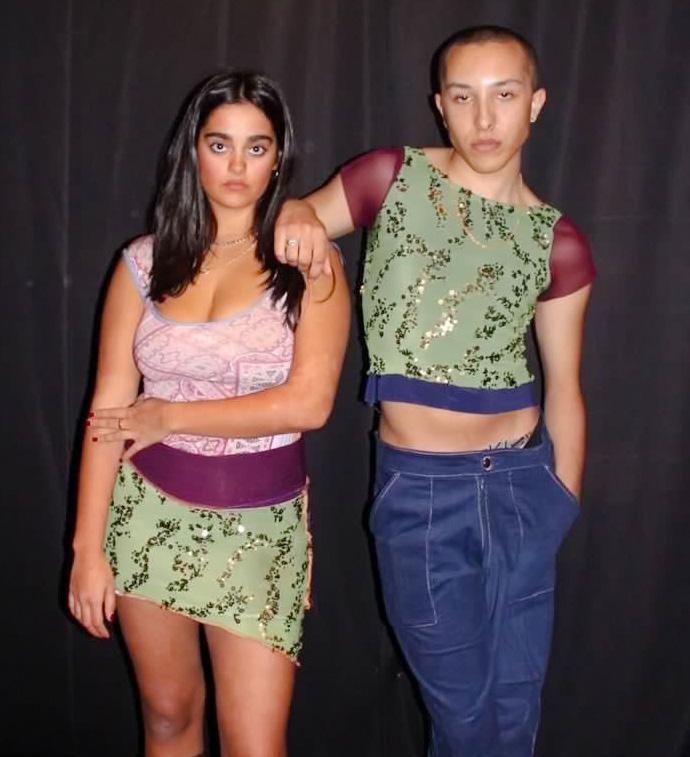
Clothes for ‘everyone’s unique body’: Cowett talks designing, business goals
Cowett, a F@B designer, first got into fashion when she was a child, taking lessons at her local sewing store. “I loved sewing and I loved the class and creating things,” she said. But “I didn’t think that fashion was a reasonable career path, so I suppressed that dream for a little bit.”
Cowett eventually came back to her dream in young adulthood, learning how to upcycle clothing and make new pieces from scratch. “Ever since high school, I’ve just been doing it continuously,” she said.
Cowett, who concentrates in gender and sexuality studies and visual art, described fashion as the “perfect intersection” between her two areas of study.
Much of Cowett’s work focuses on empowering the bodies that wear her clothes. “I personally use clothing as a way to express my gender and feel empowered in myself, and so I’d like for my clothing to also be able to do that for other people,” she said.
Lately, Cowett has been using a lot of “stretchy fabrics and knits” in her designs, “because they kind of adjust to everyone’s unique body.”
“I don’t really make fashion that is just meant to exist in a museum on a mannequin,” she said. “I really want them to have lives.”
Cowett described her design process as relatively messy. “I just have an idea in my brain and I don’t really like to draw it,” she said. “I just start cutting fabric, and sometimes it works really well, sometimes it doesn’t.”
Although Cowett participated in some fashion shows in high school, most of the runways she has done have been with F@B, she said. she had nine looks in F@B’s runway show this past Friday.
“Not only is she insanely talented, but she does such a fantastic job of matching her models with a look that best embodies them,” wrote salonee singh ’24, who has walked for Cowett three times, in a message to The Herald.
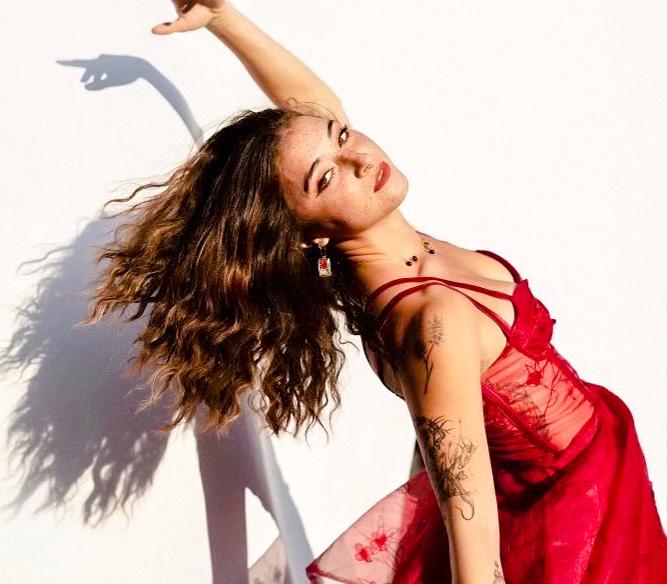
Cowett also runs a small clothing
In terms of the future, Cowett hopes to work with small designers and help design, produce and learn “the mechanics of a small business and how to survive.”
“Long-term, I would love to have my own successful brand,” she added.
‘Bridge those gaps’: Dragseth on making connections, bridging fashion, mathematics
Dragseth, a director of F@B’s design team, spent a long time deciding between design schools and liberal arts schools when she was deciding which colleges she wanted to apply to. she ended up settling on Brown because of F@B’s presence on campus and the University’s proximity to RIsD.
“I really like the way that fashion can tell a story and provide a new lens on explaining things,” Dragseth said. she explained that some of her earlier collections focused on her upbringing and childhood, such as one on “spiritual spaces” — meant to reflect her father’s work as a pastor — and another focused on personal health issues.
Fashion “was just a way to share aspects of my life that I didn’t really have a way … to just sit down and tell people about,” she said.
Dragseth, a math and political
Still, Dragseth finds that her “best work is stuff that kind of just comes to me at random times.” The ideas she gets while driving in a car or sitting in a lecture typically result in designs that come together pretty quickly, she said
As a member of F@B, Dragseth has been able to present her work in multiple runway shows. she displayed
“It’s really an art form. You can educate people through your work in a way that you can’t necessarily do if you’re giving a seminar to a set of academics,” Dragseth said. “It has really brought me so much joy (to see) how many people you can really inspire and reach out to by doing art.”
work because “women are voiceless back home” and often the victims of domestic and state-sponsored violence. shabani added that many of the women who approach the center have a “heavy history of trauma.”
The center addresses “the physical need, the social need (and) the emotional need” of refugee women through a range of programs and services because “their thoughts, their thinking (and) their well-being is everything,” Binyungu said.
she added that every Friday, the center hosts a Women’s Empowerment Group to provide the refugees with a safe and supportive environment with other women of similar backgrounds.
These sessions include group counseling with a therapist, making art and listening to music, all with the intention of facilitating a “process of healing,” shabani said. According to Binyungu, the women participating in the empowerment group receive a $50 stipend every other week for personal needs.
Marthe Uwiduhaye, originally from Rwanda, comes to the center for the Women’s Empowerment Group because “we support one another and that makes us stronger.”
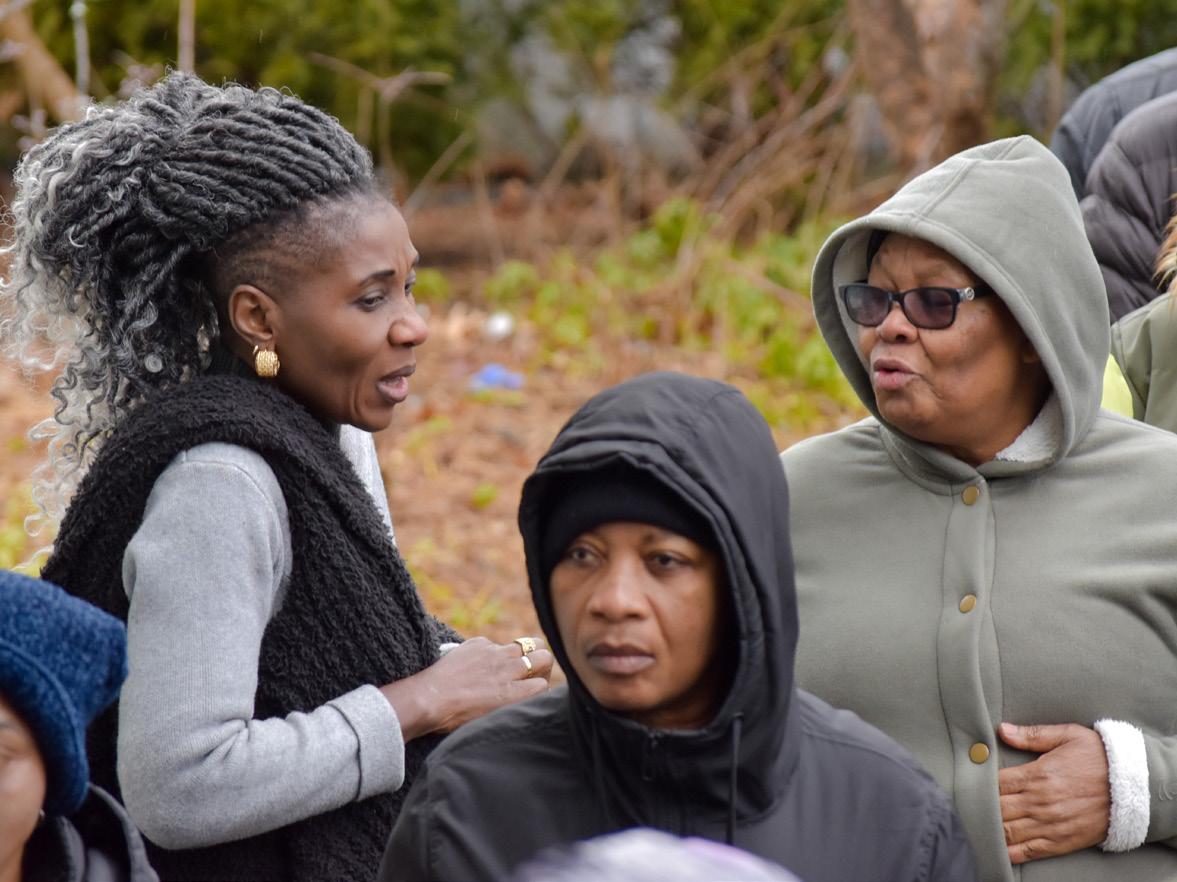
Binyungu said that the center also hosts a weekly sewing workshop with six women, connecting them with a master tailor and giving them “the space to destress.” The participants in the sewing group also receive sti
pends.
Nelly Wesley, originally from Liberia, said she has enjoyed the sewing classes at the center. Wesley added that after five years, she’s gotten more adjusted to life in the U s . “Life in America is ... better,” she told The Herald.
s habani said that supporting women also benefits the whole family because “when a woman is successful, we know that the whole family is successful.”
shabani and Binyungu established the center with long-lasting community support in mind. For example, early in the COVID-19 pandemic, the center started the Give a smile to Your Neighbor program, partnering with the Rhode Island Food Bank to provide food to families in the community who were struggling to make ends meet. Now, they serve more than 200 families and a thousand individuals a week, according to s habani.
Marie Jen, originally from Haiti, said that she’s been going to the center to pick up food every other weekend since her friend told her about it two months ago. “It’s a big help,” she said.

s habani said that these programs are only possible with “volunteers coming from everywhere,” including the University.
Cole McCartney ’25 first got involved with WRC through the community-based learning component of FREN 1410T: “L’experience des refugies: deplacements, migrations,”
which he took in the fall of 2022.
Now, he volunteers with the center on a biweekly basis, tutoring a third-grade student every Monday and delivering food saturday mornings. McCartney said that it is both the workers and the refugees who make this organization so meaningful. He added that he appreciates that “all of the resources that go into (WRC) go right back out to the community in Providence.”
The center is committed to tackling education inequities within Providence through its Education Advocacy Program. According to the WRCC website, they work with the Rhode Island Department of Education to meet the unique needs of refugee students.
Binyungu said that in addition to assisting refugees through material support and advocacy, WRC also “connects them to community.” This starts right when the refugee enters the U.s., giving newly arrived refugees a “warm welcome” complete with cultural food and celebration so that they can “rejoice for their new life,” according to shabani.
He added that in the future, WRC is planning to add a new space — named for the swahili word for welcoming, ‘kabribu’ — “where all the African community can gather together.”
“We want to keep our culture, like the mission,” Binyungu said. “We want to be ourselves, to keep our identity. We want to transfer it to our children … We cry. We celebrate lives. We stand together.”
Bannister
Kingstown, according to a November 2001 “Rhode Island History” publication from the Rhode Island Historical society. she grew up at a time when both Black and Native American communities faced significant challenges to their freedom.
BY RHEA RASQUINHA METRO EDITORAt 93 Benevolent street sits a house with brown and green wood siding and maroon-painted frames. The house, restored by the University under Ruth simmons’ administration and now occupied by a family through the Brown to Brown Home Ownership program, was once home to renowned artist Edward Bannister and his wife Christiana Carteaux Bannister, a prominent hair doctress, abolitionist and philanthropist.
Christiana Bannister was “an extraordinary woman,” said Ray Rickman, co-founder and executive director of Stages of Freedom, a nonprofit organization and heritage museum that works to promote African American history and youth empowerment.
stages of Freedom is planning to unveil a statue of Edward Bannister sept. 10 in collaboration with the Providence Art Club — which he co-founded — along with a plaque honoring Christiana Bannister sept. 16. The bronze statue will be unveiled at Market square on the Providence River, wrote Nancy Gaucher-Thomas, former president of the Art Club and co-chair of the Bannister Community Art Project, in an email to The Herald.
From hat maker to Madame Bannister
Christiana Bannister was born in 1819 or 1820 to a mixed African American-Narragansett family in North
Christiana Bannister was listed as a milliner — a maker of women’s hats — in the 1846-47 Boston Directory, her “first appearance in the printed record,” according to the publication. By 1853, she was listed as a hairdresser and ran her own salon.
Edward Bannister — who was born in Canada, likely in the late 1820s — came to Boston around 1850. He hoped to become an artist, but after facing difficulties finding employment, he pivoted to work as a hairdresser with Christiana Bannister — known then as Madame Carteaux — and the two married in 1857, according to the RIHs Christiana Bannister established herself as a “hair doctress,” providing care for “the various diseases incidental to the hair and scalp,” according to an advertisement in the “Liberator.” By 1859, her business success allowed Edward Bannister to pursue art full-time. The couple was also “deeply involved in the abolitionist community,” according to the RIHs. They moved to Providence in 1869. shortly after, Christiana Bannister opened a salon downtown and her husband’s “artistic career thrived.”
Between 1876 to 1883. Edward Bannister co-founded the Providence Art Club and won prizes at art exhibitions throughout the northeast, including the top prize at the 1876 Philadelphia Centennial Exposition, an award which the judges wanted to “reconsider” after finding out Bannister was Black, according to the smithsonian American Art Museum.
According to stages of Freedom Co-Founder and Program Director
Robb Dimmick, Christiana Bannister used her wealth not only to buy her husband’s career as an artist but also to support the 54th Massachusetts Infantry Regiment — a unit made up of Black soldiers during the Civil War — and assist abolition efforts.
“she was a staunch abolitionist … (and) we know her vast concern for her own community” through her work in founding the Home for Aged Colored Women, which provided a space for elderly Black women who were not allowed into other nursing homes because of segregation, Dimmick said.
For Theresa Guzmán stokes, executive director of the Rhode Island Black Heritage society, Christiana Bannister had a talent of getting “people to take notice of the needs of the community,” said Guzmán stokes. “When we look back, we don’t often credit women …
with that kind of power.”
“I would have made out very poorly had it not been for her,” Edward Bannister said of his wife, according to the RIHs
Highlighting the Bannisters in Providence
The coming installation of a statue and plaque “is celebratory,” Rickman said. “It’s an accomplishment on stages of Freedom’s part to elevate (Christiana Bannister) in every chance we get.”
Rickman previously advocated for the renaming of what is now Bannister st., which was previously named for an enslaver. During his tenure as Deputy secretary of state, he also pushed to have an image of Christiana Bannister included in the Rhode Island state House.
According to Dimmick, Rickman raised the funds necessary and found an artist to create a bust of Christiana

Bannister, a project that “was so important” because “all the iconography, paintings (and) statues” in the building were of men.
The goal of the upcoming plaque is to give the Bannisters more visibility and show “how extraordinarily influential they were in making Providence a creative capital,” he added.
In the statue to be unveiled in september, “Edward Bannister will be seated on a bench with sketchbook in hand as he welcomes onlookers to sit beside him,” Gaucher-Thomas wrote. “A plaque with a QR code will share his life’s story.”
For this project, the Art Club is collaborating with a number of organizations — including R.I. Black storytellers, stages of Freedom and the R.I. Black Heritage society — with the goal of creating “a broader platform for community engagement to promote Bannister’s legacy,” she added.
While Edward Bannister is known in the art world, Christiana Bannister has not yet attained recognition reflective of their influence, Guzmán Stokes said. “That is something that all of us who work in this field are trying to remedy.”
Guzmán s tokes hopes for more scholarship regarding Christiana Bannister and her early life, as “diversity in historical representation is mostly about scholarship.”
But diversity also “boils down to funding … (and) support,” Guzmán stokes said. “We’re still at a time where African heritage organizations aren’t getting the same level of recognition” as organizations associated with being “more important or prestigious.”
“There really has to be more support and recognition for Black organizations,” she added. “That’s how true diversity happens — when everyone is on an equal platform.”
‘An extraordinary woman’: The legacy of Christiana Carteaux
